7 years of experience in China Taiwan practice
Author:Everyone is a product manager Time:2022.09.28
This article is 7 experiences summarized by the author's 5 years, which focuses on the overall product thinking consciousness and framework. It mainly summarizes the development of thinking, balance ability, system design, transfer of contradictions, good at borrowing, information mechanisms, and precipitated assets, hoping to help you.

For a period of time, I have written a total of 7 articles in the series of "I am the 5 Years of the Central Taiwan". This is:
There is a relatively macro concept of Zhongtai: "I have been the five years of Zhongtai: My Central Taiwan View" has my practical retrospective of my practice: "The overall retrospective of the 5 -year development of Zhongtai" Planning and landing in the central Taiwan system dismantling: "In -depth analysis of the planning of China and Taiwan: User, Mechanism, System" has the method of building the construction of the Zhongtai system: "The" Barrier "Thinking of the Construction of Zhongtai System", "The Construction of the Zhongtai System Construction "Chain Chain Thinking" how to do refined operations based on problems: "Refined operation of Zhongtai:" Problem "reverse drive mechanism" has the thinking and development of Zhongtai The "thick" "series, more focused on the overall product thinking consciousness and framework, and planned to write enough 10 articles. Basically, the experience in Zhongtai is almost sorted out.
There are two articles that have been conceived or prepared at present:
An article intends to write the text version of the "7 Experience of the 5 Years of Practice" that I have shared before, which is the content of this article that everyone is about to see.
Another plan to write a person to introduce the ability model of Zhongtai's products, and the name is tentatively designated as the "Cross -type" capability model of China Taiwan Product Manager. "
In the last article, I haven't thought about it yet, and I think about it later.
In addition, this series basically does not involve specific product domain design experience and methods, such as what to do with professional fields such as orders, payment, promotion, etc. If you have a chance to read it, you should write it again.
The text begins. First look at a overall framework:
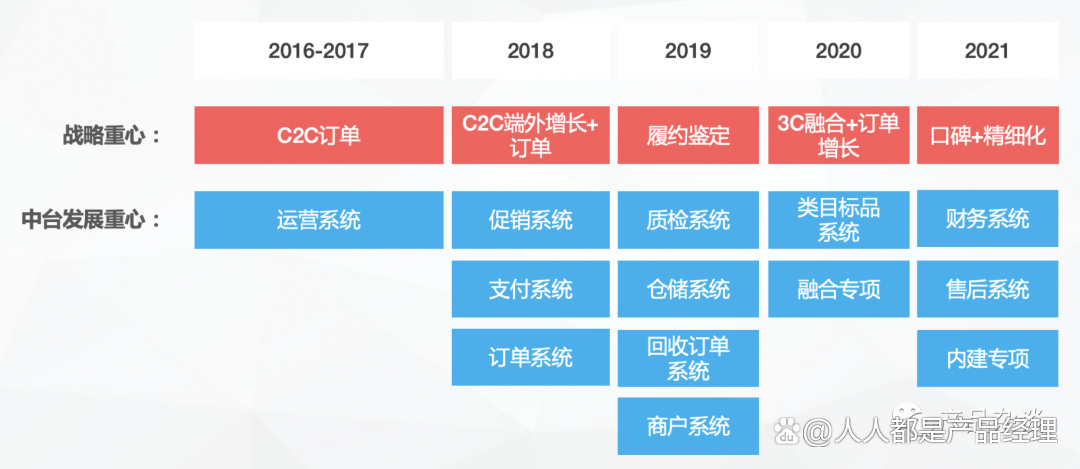
The above 7 experiences are basically my past practice, which is more suitable for some experience in the development of China and Taiwan.
Next, let's introduce one by one.
1. Development thinking
I think the core model of development is composed of 3 elements, namely planning, opportunities, and resources.
Development is the process of continuously observing opportunities in the surrounding environment, combining existing resources, and planning and landing.
The opportunity awareness is very important. It basically determines whether we can do valuable things. This opportunity macro comes from the company's strategy and is hidden in the connection between users, business, with siblings, and colleagues.
Planning to the ground, under the premise of experience, combined with the opportunities insight, and then determine the goals and rhythm based on resources, and finally get the result.
1. Planning
I think the plan is divided into 3 steps:
Step 1: "See". It can be done by others, and it can be derived by it by yourself.
Step 2: Blueprint. It is framework, core path, and guidance principles.
Step 3: Constantly correction. Large planning disassembling small planning, phased diagnosis current, timely correction planning.
2. Opportunity
When you talk about opportunities, in fact, everyone will mention more needs.
But if you just wait for the needs in the process of development, or just see the demand of explicit, then you basically do not have the opportunity.
More opportunities are actually hidden under the iceberg, for example::
Thinking of strategic thinking and close communication users and customer service feedback internal complex/repetitive/uninterrupted new technologies ...
From 2016 to 2021, the transition to Zhongtai will closely follow the changes in the company's strategic center of gravity, and be keen at aware of the opportunity. Then make a timely judgment, appropriately adjust the formation, focus on resources, and then support the development of the business, and make the precipitation of Zhongtai. As shown below:

3. Resource chapter
How to think of resources, my point of view is actually very simple, in fact, just like investing, how do you make more money.
With financial models, we do nothing more than a few things (note that the following income and expenditure do not really indicate money, which can be understood as value):
Increase the assets, and then the assets will continue to increase their income. For example, a systematic and template tool can generate reuse, so it can support demand without spending any costs next time, which is equivalent to bringing value. Increase income directly. For example, Zhongtai can also directly do some income -increasing projects, such as marketing tools, low rate channels, and so on. Reduce expenditure. For example, it is not good to achieve good China, causing repetitive resource investment or unreasonable design, that is, the disguise increases the expenditure in disguise. Reduce liabilities. For example, some Zhongzhonghua designed, and it has done too many redundant functions that can not be used for a long time, which is equivalent to we have a liability. Therefore, take resources as your own money seriously.
Demand abstracts turn into system products to avoid repeated consumption resources; open up new business capabilities and directly bring benefits; reasonable product structure, focus on scalability, and not waste R & D resources; future. Second, balance ability
Balanced decision -making is a very complicated thing.
During decision -making, you are facing users in a broad sense, not limited to product users, but all stakeholders in the product process. Then combine the various variables of the environment, to obtain an optimal solution.
In addition, balance is not necessarily reflected in each single -point decision. More often in the entire cycle, at this time the balance ability depends on global thinking and rhythm. That is, local and overall balance, short -term and long -term balance.
1. Local and overall
Here is a case in work:
The company's two businesses need to connect the two -stage transaction of C2B and B2C. One is called and one is called the old.
In the end, the selling model was actually provided to the upstream business uniformly packaged to the upstream business, but the old replacement was indeed used to use the business to pack itself.
In terms of part, for the old -fashioned business party, their cost must be high. In addition to its own development, it is also necessary to be familiar with the current China and Taiwan.
In terms of overall company, the selling model is a relatively mature model. It must not belong to the concept of MVP, and the current scene is directly used by multi -category; from the perspective of ROI, the cost is small.
However, for the old change, the business is a stage of attempt, and many people have inconsistent views, the estimation of the single volume online is also relatively average, and the category is limited. In this case, considering ROI, the Zhongtai does this is relatively unreasonable.
Another phenomenon is the dilemma of non -core business:
When China Taiwan becomes a central business center, it is difficult for non -core business to obtain resources.
If you stand completely at the perspective of ROI to judge the investment in resource, the satisfaction of business to China and Taiwan will be reduced to negative.
At this time, there are 2 suggestions:
Do not keep small fixed bandwidths, and order in order to let business see hope; or it is necessary to give certain demand support within a fixed cycle, even if it supports a small demand.
In this case, keep as much "emotional" communication as much as possible for non -core business.
2. Short -term and long -term
Talk about a case of the upgrade project of the product system:
In history, it started with C2C, so the design of the entire product structure is not so complete. Users release C2C products. There is not much information related to product -related information that requires structural constraints. It is more about the title and description of these texts.
However, as the company pays more and more attention to services and performance, it has gradually developed into a deep intervention of vertical categories. There are C2B recycling and B2C stores. The completeness of the attribute system.
It is already in 2019 when it is an upgrade project. It has been three or four years since the earliest C2C underlying design. There has been no product intervention in the process. It is a technical patch, and it is finally time to be unable to carry it.
So, we finally decided to have a reconstruction of breaking the boat, codenamed [Phantom].
The Pangu project first promoted the technology and content system of the internal business of the transfer, and the follow -up coincides with the integration of the turning and looking for a beautiful machine.
In the process, the technical difficulty and business pressure generated are the highest projects in the history of China and Taiwan.
This underlying change project is very high in collaboration pressure (the business is not understood in a short period of time); however, for the long -term value, you must make decisions decisively, otherwise it will be more painful.
Of course, this example also makes everyone realize that the system architecture of the Central and Taiwan must have forward -looking and expanded reservations, otherwise it will make up for dozens of times of resources in the future.
Third, system design
1. Standard and personalization
Standards and personalization are actually a question of flexibility.
At the system design level, many people's approach will directly hand over personalization to the business, and then cause Zhongtai+business to face other upstream and downstream, as shown below:
Such architecture has the following advantages and disadvantages:
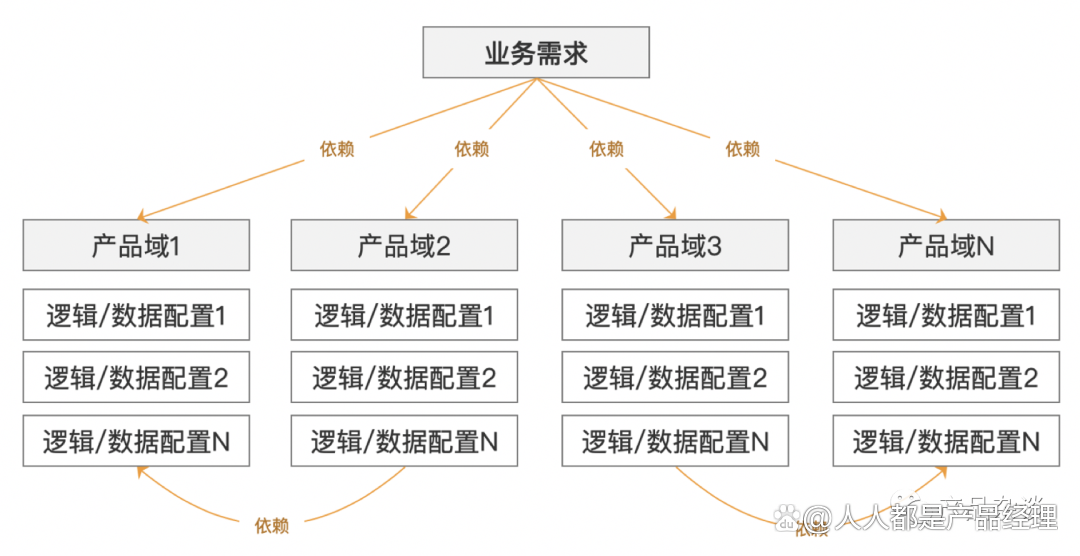
Advantages: China and Taiwan's resources are relatively small; business flexibility is high; disadvantages: all upstream and downstream perception costs are large; data unity and rules will become extremely difficult; in fact, everyone will find that the disadvantages will be greater than the advantages.
There is another architecture, which is a solution for Zhongtai as a barrier, as shown below:
The advantages and disadvantages of the architecture intervention in Zhongtai are as follows:

Advantages: less upstream and downstream perception and interaction costs; realization of data unity and rules; disadvantages: the difficulty of the structure of the middle and Taiwan and the product challenge; Disadvantages.
Therefore, it is also recommended that Zhongtai as a barrier, and then the business is limited and flexible to ensure that the overall situation is the best.
2. Multi -domain series and cross -domain conversion
One demand is relatively complicated in the realization of Zhongtai as a whole, generally 5-10 cross-domains; and the content of the settings in each domain may be as many as dozens of items; and between the regions of Zhongtai There is a dependence. As shown below:
In the project, missed mismatches often occur, and the cost of communication and collaboration is very high, and the test cycle is relatively long.

Therefore, in Zhongtai, doing some big projects, "old people" will have more advantages because they will be more experienced.
The development and stability of that organization must not be based on pure personal experience.
After continuous exploration, we gradually realized the realization of a demand in China.
That is, through the primary key like business lines, it runs through the function points of all product domains, and the functional point has become as much as possible to configure the code logic.
The article "Chain Thinking" has been clearly talked about, and it will not be expanded here. The communication of each product domain can also be translated through a unified measurement system. As shown below:
After the systematic, the project efficiency is greatly improved, and there are few missed facilities, and the systemic naturally saves project -based test costs.
And such "experience" can become a system that does not rely on people, which greatly improves stability.
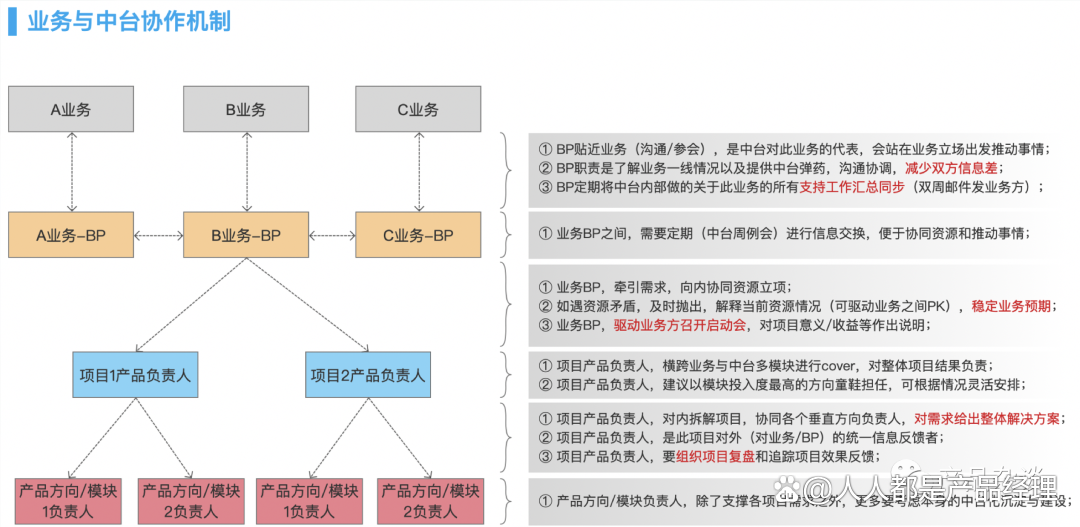
Fourth, transfer contradiction
As the center of the project implementation, Zhongtai will inevitably encounter the contradiction between resources at high frequency.
The expectations of each business in China and Taiwan hopes to be the highest priority, but the resources are always limited, and the probability will be invested in key businesses.
At this time, the high probability of not being supported by more support is not high to China and Taiwan. Sometimes the one -way transmission of information is easy to intensify contradictions.
In the face of this situation, it is objectively two solutions: First, the Zhongtai plus people, but the priority of the business, the Central Taiwan is done in the order.
The most important thing is that these two operations must not be a single point of communication and judgment.

As much as possible, the relevant interest parties reached a consensus together. For example, the important priority of finalizing all business things from the company level, so that it is no longer the priority of the Zhongtai itself, and all business is easier to accept.
In the same way, increasing the resources of China and Taiwan, this involves the recruitment budget, and from the perspective of the boss, it must also be the premise that the business needs to increase resources.
Five, good at borrowing momentum
If the product manager wants to change the world, I feel that the synergy ability can be at least second.
The correct and important thing, more often, may not be able to recognize, especially the time of long -term interests and short -term interests.
Without "real power", it is necessary to rely on collaborative ability, and collaboration must pay attention to all kinds of borrowing.
According to my own experience, there are 4 ways to borrow:
Find the common point of interests. For example, engage in joint projects, business needs+infrastructure construction together, and project benefits. In the name of **. For example, in the name of users, the name of risk, in the name of the boss (sometimes it needs to be used, but pay attention to the form). Interpersonal relationships. For example, to make the collaborator feel the attention, the group building a celebration party must remember to thank, daily informal communication, and establish your "human feelings". Influence (word of mouth, prestige). Let yourself be a golden signboard, you have a monument, everyone believes in you; you can also call other famous people to come to the platform. Here is a case. The earliest opportunity for our payment center to launch and develop is actually an accident from 146W repetitive payment.
This risk is very high, and everyone can no longer bear the second accident, so after that, we naturally promoted the implementation of systematic projects such as accounts and settlement.
In the process, I think no one will "hinders" this, because no one is willing to bear this responsibility in the name of risks.
Of course, if you want to do things, you must not just engage in the borrowing of these "life". It is the foundation for its own real skills.
6. Information mechanism
As a center in China, there are many upstream business, and there are also many in the Zhongtai area.
External, China Taiwan undertakes more systems and application products, and the online and offline issues consultation is normalized; internally, the deep logic of Zhongtai is complicated and the horizontal linkage is strong.
So in this link, information intersections must be the most.
If there is no good information mechanism, it is particularly easy to cause the results of low -connection efficiency with China and Taiwan, low internal efficiency within the central and Taiwan, and decreased internal and external satisfaction.
Around 2020, we encountered such a painful state:
On the company's WeChat, the 99+ news of the product classmates is a problem with the news, let alone the processing.
In addition, a large project, Zhongtai products will be trapped by various meetings, and there are not many time to design and think about product design and thinking.
Finally, after our continuous attempts and iterations, we have found an effective way to transmit business, Central Taiwan, and internal information exchange of Central Taiwan. As shown below:
PS: This information mechanism is introduced in detail. You can refer to the article "Barrier Thinking".
Seven, precipitated assets
In the middle and Taiwan, except for daily projects and capabilities, what can Zhongtai leave an organization?

I think I need to consider from the following three aspects:
From the system and mechanism to people, the dependence on people has increased in sequence, and reliability decreases in order.
The perspective of precipitating assets should be transformed into systems, followed by various mechanisms, and finally relying on people's experience.
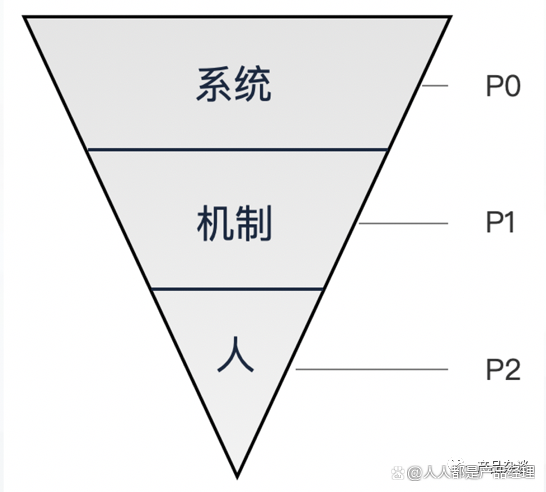
Of course, it is not that people are not important, but simply considering the uncontrollable humanity from the perspective of asset precipitation, as well as ROI cultivated by people.
1. System angle
In addition to the project, we need to precipitate more from the perspective of the platform of Zhongtai.
According to practical experience, I divided the platform of Zhongtai into 4 systems, namely open platforms, rules centers, configuration centers, and global inquiries. Corresponding to the standardization of capacity, logical rule, variable configuration, and data linkization, respectively.
For details, please refer to the article "Barrier Thinking".

2. Mechanism angle
We divide users into several categories, namely business users, end users, and team users, which correspond to demand, use, and value.
For different users, there will be corresponding mechanisms.
The effective operation of the mechanism ensures the input and output of various types of information, and ensuring that the entire team organization is organized. 3. Talent perspective

In the process of development of Zhongtai, the internal expansion will inevitably be expanded internally. Only in this way can the marginal costs be reduced when multi -business access can be guaranteed.
In the past, the key projects in China and Taiwan accounted for about 70%of the total proportion of the total investment in China, and basically involved more than 5 product domains.
Then, as the central Taiwan product manager, it will inevitably become a master of cross -domain and even the global. And they will be more outstanding in communication, pressure resistance, organizational coordination, business sensitivity, and execution.
Such talents are actually a valuable wealth for the company. At different development stages of the company, they can export to business or innovative departments.
In the future, I will also write a separate article to introduce the product capacity model of Zhongtai. At that time, we will expand it in detail.
Here, the introduction of 7 experience has been introduced. I made a picture of the outline for everyone to remember.
This article is published by @本 本 本 本 本 is the product manager. Reprinting is prohibited without the author's permission.
The title map is from Unsplash, based on the CC0 protocol
The point of view of this article only represents the author himself, and everyone is the product manager platform that only provides information storage space services.

- END -
The official announcement of the Red Devils 7s is known as the core parameter of the core parameter of the "Full -level Devils, Stable Frames and Winning"
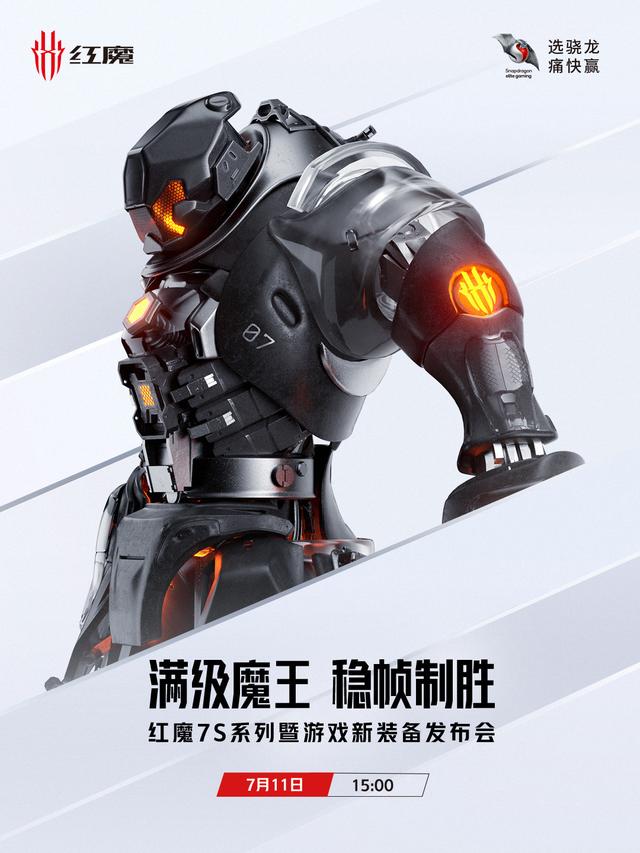
A few days ago, the long -standing# Red Devils 7s# finally ushered in the official...
"Turkey" in the city does not simply cultivate new varieties of sweet potato

Yang Taishan shows new sweet potato varieties (information pictures)Zhoukou Daily ...